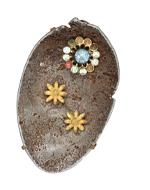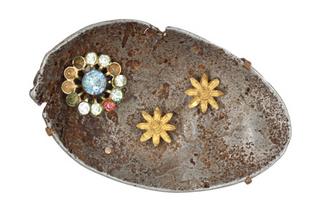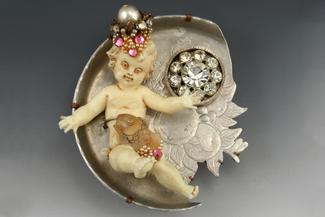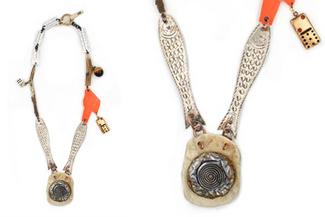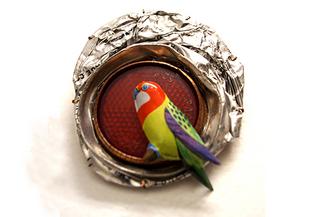Settings Beyond the Stone
Settings Beyond the Stone will explore a wide range of concepts applicable to personal adornment and the narrative object. Working with traditional and alternative material—silver, copper, wire, recycled materials, found objects—participants will fashion objects of personal importance, expression, and adornment. We will also investigate the use of color and collage as a design tool. Through demonstrations and hands-on projects, we’ll discover the methods of selection, integration, and assembly inherent to this limitless range of materials. The class will be centered around instruction and demonstration with plenty of time for individual attention. Students will be responsible for bringing their own unusual materials to set that they feel express their creative voice.
Meet the instructor
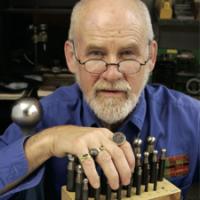
Robert Ebendorf was born in 1938 in Topeka, Kansas. He received his BFA in 1960, his MFA in 1962. Following graduation, he received a Fulbright Fellowship to study at the State School of Applied Arts and Crafts in Norway. He has taught at the University of Georgia (1967-71) and State University of New York at New Paltz (1971-88). In 1995, he was awarded the American Craft Council Fellowship for his achievement in crafts and Commitment to the craft movement. Bob is co-founder and past -president of the Society of North American Goldsmiths (SNAG) and represented in many worldwide collections including the Metropolitan Museum of New York, the Victoria and Albert Museum (England), Yale University Art Gallery.
He taught at East Carolina University (1998-2016) where he served as the Belk Distinguished Professor in the Arts for many of those years. The Smithsonian institution invited him to participate in its Archives of American Art Oral History Program. He was awarded the 2010 North Carolina Governor’s Award as well as the 2014 Lifetime Achievement Award from SNAG. He is currently Professor Emeritus and enjoying “retirement” in Santa Fe, NM.
Materials & Tools
There is a $25 materials fee for this course that is payable directly to the instructor in class. Please note this fee may vary from student to student depending on the amount of material used during the workshop.
- one 12" x 12" 20 gauge sheet of copper
- 20 gauge silver if you care to work in that, but most projects will be in copper
- Any metals tools you already have and can travel with. There are some tools in the studio that can be borrowed.
- X-acto knife and spare blades
- Quick setting glue such as Zap or Crazy Glue, E6000—can be found at craft stores
- Saw blades
- Assorted drill bits
- Gather all sorts of materials and objects which appeal to you because of their age, association, history, form, color, texture, etc. Listed below are some loose categories to help you get started on your collection.
- Natural materials: seeds, pods, shells, bones, etc.
- Found objects: broken glass from the beach or parking lot, pottery lot, pottery shards, pieces of plastic.
- Old metal: bottle caps, cans (broken and rusted, or chosen because of label detail), old kitchen utensils, metal toys etc.
- Old Jewelry: from home, flea markets, second-hand stores. We will tear it apart.
- Memorabilia that is important to you: toys or game pieces from your childhood, family photos and pictures of yourself, postcards, letters and postage stamps, etc.
- Stones—cabochons and tumbled stones.
- Aside from scouting interesting materials at second-hand stores and flea markets, see if you can discover other sources such as a fishing tackle store, and old fashioned hardware store, or a grocery store that has a selection of imported foodstuffs and packaged goods.
- Bring 5 metal jar lids, for example; Snapple lids or Kerr jar lids. The lid is better when the rim is very low and shallow.

